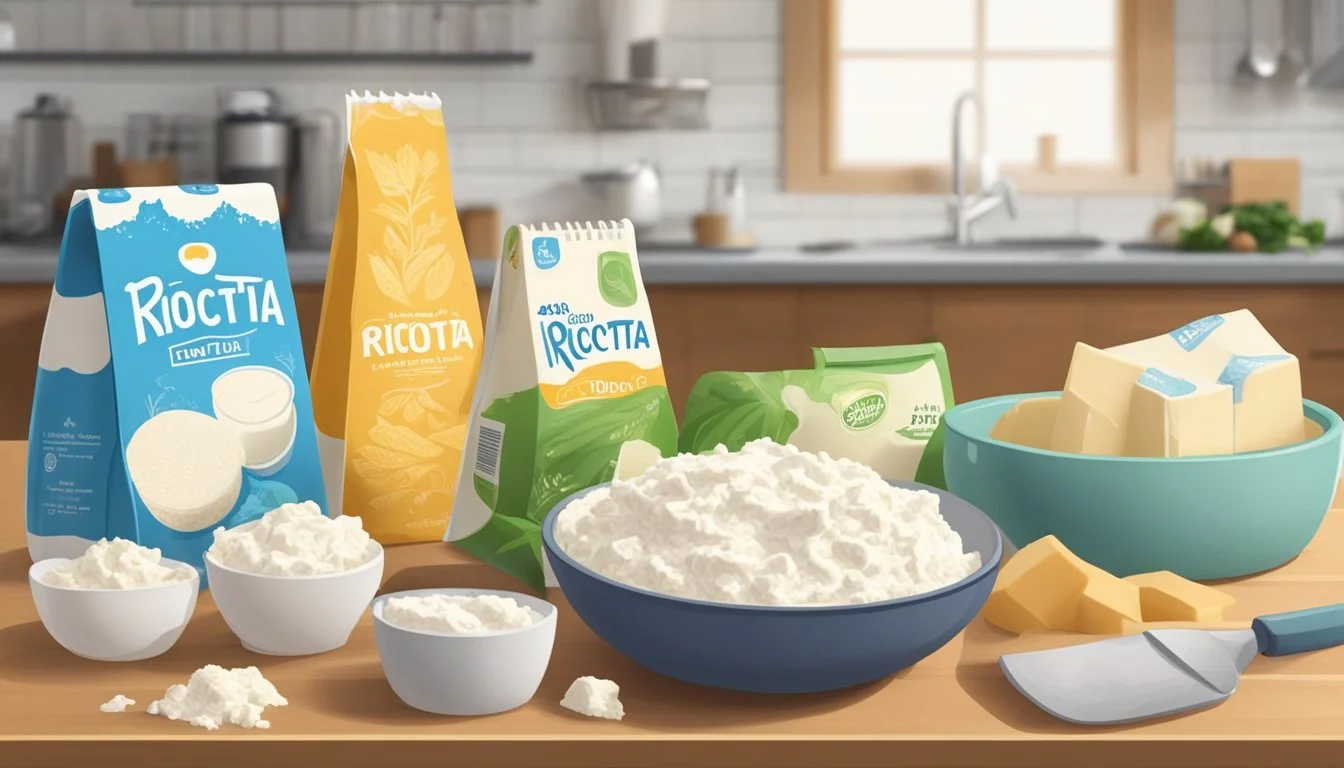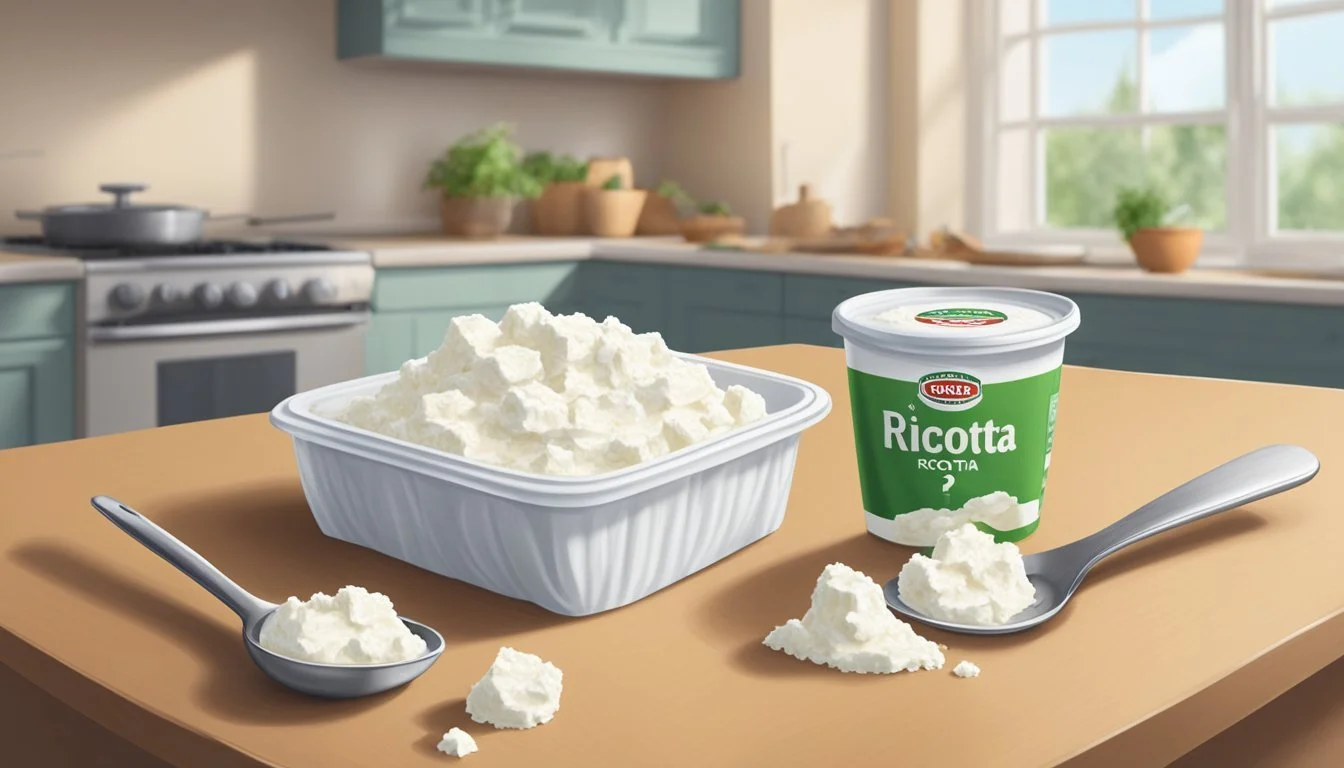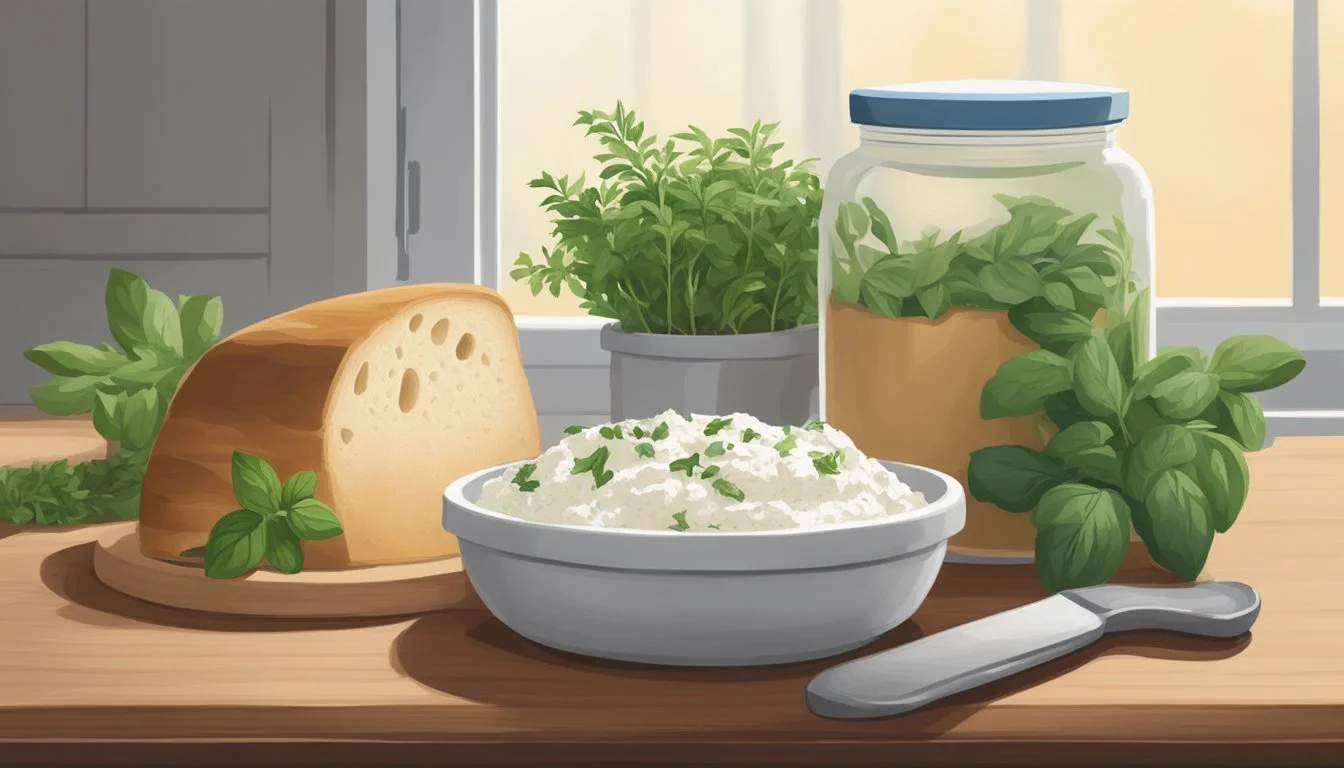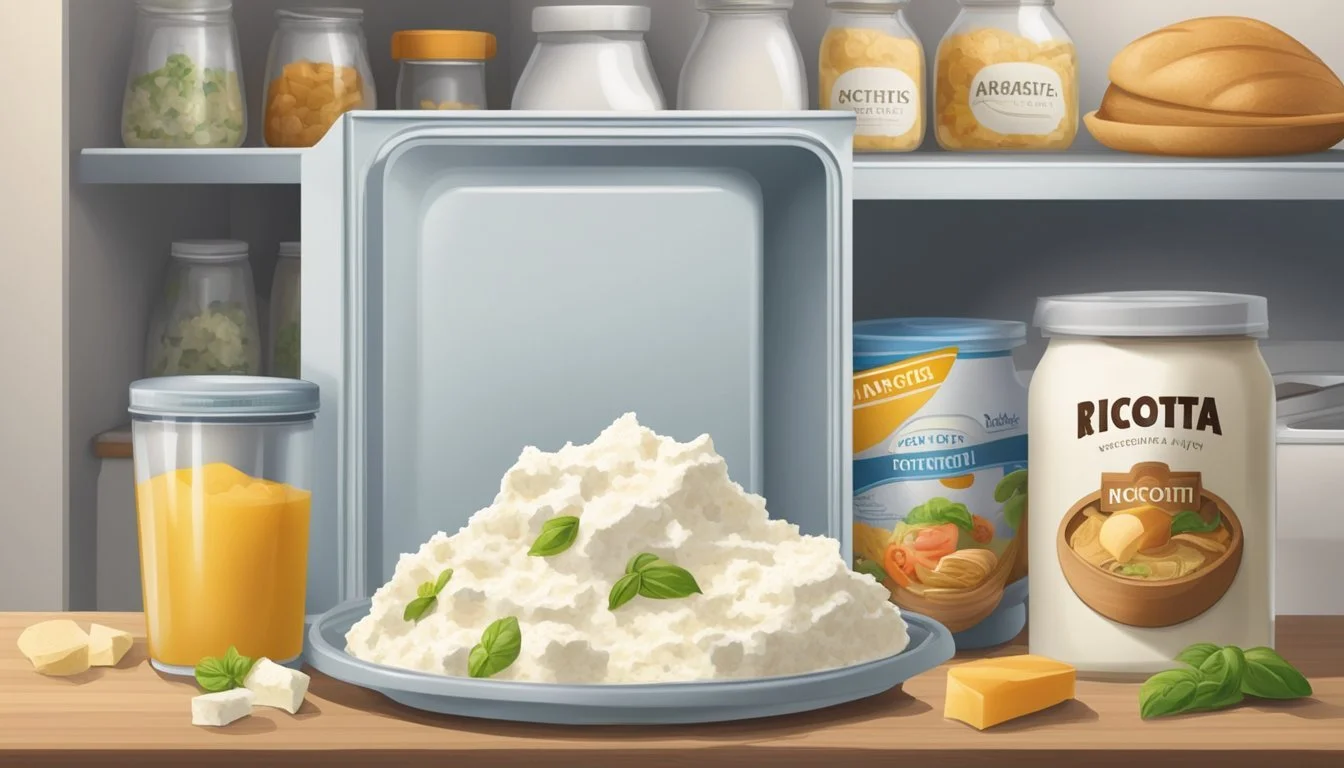Does Ricotta Go Bad?
Understanding Cheese Shelf Life and Spoilage Signs
Ricotta cheese, a staple in Italian cooking, is prized for its creamy texture and subtle sweetness. It elevates dishes from lasagnas to cheesecakes with its rich yet delicate flavor profile. Like all dairy products, ricotta has a finite shelf life and can indeed go bad. Consumers should be aware of how to spot signs of spoilage and understand the factors that influence the cheese's longevity to ensure they enjoy it at its best quality and avoid potential foodborne illness.
Freshness plays a critical role in ricotta's quality, as it is a soft cheese with a high moisture content that makes it more perishable than hard cheeses. Typically, an unopened container of ricotta cheese will last in the refrigerator for about one to two weeks past the printed "use-by" date, provided it has been stored properly. Once opened, ricotta's shelf life diminishes, and it is generally recommended to use it within three to five days. Recognizing the signs of spoilage in ricotta, such as an off smell, discoloration, or changes in texture, is essential for safety and enjoyment.
Understanding Ricotta Cheese
Ricotta cheese is a fresh dairy product renowned for its light, creamy texture and versatile usage in culinary applications. This section sheds light on the fundamental characteristics and the various types of ricotta cheese available.
Characteristics of Ricotta Cheese
Ricotta is a soft cheese made from the whey remaining after other cheeses are produced, primarily from cow, sheep, or goat milk. Its texture is typically smooth and creamy, contributing to its fresh and mild flavor. As a cheese that contains more moisture, ricotta has a shorter shelf life than harder cheeses. When it is fresh, ricotta should neither exhibit a sour smell nor a grainy texture; such signs indicate spoilage.
Ricotta Cheese Varieties
Ricotta comes in different forms based on the source of milk and the production method:
Traditional Ricotta: Made from the whey of cow's milk, with a smooth and slightly sweet taste.
Ricotta Salata: A salted version of ricotta that is aged and has a firmer texture, suitable for grating.
Ricotta Affumicata: A smoked variety that provides a bolder flavor compared to the traditional ricotta.
Ricotta di Bufala: Crafted from the milk of water buffaloes, known for its rich and creamy flavor.
Each variety brings its distinct texture and flavor profile, affecting the quality of dishes in which it is used.
Shelf Life and Storage
The shelf life of ricotta cheese hinges on optimal storage conditions. Proper storage helps to prevent the growth of bacteria and maintain quality, while understanding the signs of spoilage ensures one avoids consuming spoiled cheese.
Optimal Storage Conditions for Ricotta Cheese
Ricotta cheese should be stored in the refrigerator as soon as it's brought home. The ideal temperature for storage is between 35°F and 40°F (1.6°C and 4.4°C). It should be placed in the coldest part of the refrigerator, which is typically at the back, away from the door. Unopened ricotta cheese can last for 7-10 days in the fridge, while an opened container generally stays good for about 3-5 days if kept sealed.
To maintain freshness, ricotta should be kept in its original packaging until it’s used. Once opened, it’s best to transfer it to an airtight container to limit exposure to air and moisture, which can accelerate spoilage.
Signs of Spoilage in Ricotta Cheese
A key sign of spoilage is a sour or rancid smell, which indicates the presence of harmful bacteria. Discoloration or the development of any black spots or mold also denotes that the cheese should not be consumed. In terms of texture, if ricotta becomes either excessively dry or watery, it is no longer optimal for consumption. Taste is another indicator; however, tasting should be done cautiously and only if there are no visual signs of spoilage.
Extending the Shelf Life of Ricotta Cheese
Freezing ricotta cheese can extend its shelf life significantly, although it may alter the texture, making it grainier and thus potentially less suitable for some recipes. To freeze ricotta, it’s advisable to portion it into usable amounts and store it in a freezer-safe airtight container. Record the freezing date on the container for future reference. While frozen ricotta can last for up to 1-2 months, it's best when consumed within a month of freezing. Always thaw frozen ricotta in the refrigerator rather than at room temperature to minimize the risk of bacterial growth.
Food Safety Considerations
Ensuring the safety of food is paramount in the culinary world, with the freshness of ingredients like ricotta cheese being a significant concern. Recognizing the signs of spoiled cheese and understanding the health implications of consuming such products are crucial to maintaining high standards of food safety.
Recognizing Spoiled Ricotta Cheese
Smell: Fresh ricotta has a mild, slightly sweet smell. A sour or ammonia-like odor is a clear indicator that the cheese should be discarded.
Texture: The cheese should be smooth and creamy. Any grainy, crumbly, or watery texture signifies that the ricotta is no longer fresh.
Color: While fresh ricotta is typically white, any color change or the presence of mold in green, black, or white hues is a definitive sign of spoilage.
Taste: A sour or bitter taste in ricotta cheese confirms it has gone bad. Fresh ricotta should have a delicate, milky taste.
Health Risks of Consuming Spoiled Cheese
Consuming spoiled ricotta cheese can lead to foodborne illness. Spoilage is often visible in the form of mold, which can produce spores and toxins. These toxins may cause symptoms like nausea, vomiting, and diarrhea. It is imperative to discard any ricotta cheese showing signs of spoilage to minimize health risks.
Usage in Cooking and Recipes
Ricotta cheese is a versatile ingredient used extensively in Italian cooking, known for its creamy texture and mild taste that enriches both savory and sweet dishes. Managing its freshness and consistency is vital for achieving the desired flavor and texture in recipes.
Incorporating Ricotta in Dishes
Ricotta cheese is primarily known for its role in classic Italian dishes such as lasagna, ravioli, and cannoli. Its rich, but mild flavor makes it an excellent base for both savory and sweet spreads. For a savory option, ricotta can be mixed with herbs and spices and spread on bread or mixed with pasta. In desserts, the cheese's subtle sweetness is perfect for cheesecake or filling in baked goods like pastries.
Homemade ricotta cheese often has a fresher taste compared to store-bought varieties which may contain preservatives. The high moisture content and fat content in ricotta contribute to its creamy consistency, making it a preferred choice for creamy sauces and baked goods where it adds protein without overpowering other flavors.
For a healthier substitute, ricotta can replace cream cheese in recipes to lower fat content while still maintaining a creamy texture. Additionally, because of its low salt content, ricotta is perfect for adding a creamy texture to dishes without greatly increasing their sodium levels.
Freezing and Thawing Ricotta for Cooking
Freezing ricotta cheese can extend its longevity, making it a practical way to save leftover cheese for later use. To optimize freezing, divide ricotta into usable portions and store it in airtight containers or heavy-duty freezer bags to prevent freezer burn. Here's how to correctly freeze and thaw ricotta for cooking:
Freezing Ricotta Cheese: Press out any excess whey from the cheese to reduce watery consistency upon thawing. It is also advisable to add a pinch of cornstarch for each cup of ricotta to maintain consistency.
Thawing: To thaw, place the frozen ricotta in the refrigerator for several hours or overnight. Expect some separation of whey; gently drain off any excess liquid and stir the ricotta to restore its creaminess.
Upon thawing, the consistency may slightly change, making it less suitable for dishes where ricotta's texture is key, like fine spreads. However, it is still ideal for cooking and baking uses such as lasagna or mixed fillings, where the change in texture from freezing is less noticeable. Note that frozen and thawed ricotta should be consumed in dishes where it is cooked through and is not recommended as a substitute for fresh ricotta in raw applications like desserts or cold dips.
Best Practices for Consuming Ricotta Cheese
Ricotta cheese is a fresh, soft cheese that is highly perishable, so proper storage and a keen eye on its freshness indicators are crucial in determining when to consume or discard it.
When to Consume or Discard Ricotta
Unopened Ricotta Cheese: Typically, an unopened container of ricotta cheese can remain fresh for two to four weeks beyond the "use-by" date if kept refrigerated consistently at 40°F or below, as per guidelines from the U.S. Department of Agriculture.
Appearance and Consistency: Fresh ricotta should have a smooth texture without any discoloration. Disposal is necessary if one notices a change to a grainy, crumbly, or rubbery texture.
Odor: A mild, slightly sweet smell indicates good ricotta. An ammonia-like or sour odor signifies spoilage.
Opened Ricotta Cheese: Once opened, ricotta should be consumed within one week, keeping in mind:
Airtight Storage: Store in an airtight container to maintain freshness and prevent cross-contamination.
Temperature: Consistent refrigeration is key. Even short periods of time at room temperature can accelerate the growth of harmful bacteria.
Guidelines for Consuming Leftover Ricotta
Leftover ricotta cheese should be handled with care to extend its shelf life while retaining its qualities for safe consumption.
Storage: Immediately store leftover ricotta in the refrigerator, ideally in an airtight container to protect against humidity and contaminants.
Cross-Contamination: Use clean utensils when serving ricotta to prevent cross-contamination.
Freezing: While freezing can extend the life of ricotta, it may alter its consistency. It is best used within a month and should be thawed in the refrigerator.
Consumers should always refer to the latest guidance from the U.S. Department of Agriculture for the most reliable information on cheese storage and safety.
Miscellaneous Information
This section explores the versatility of ricotta cheese, providing alternatives for those who might not have it on hand, and explaining how to make homemade ricotta for a fresh, aromatic addition to pasta dishes (What wine goes well with pasta dishes?).
Alternatives to Ricotta Cheese
When one cannot procure ricotta, several substitutes offer similar textures and flavors to complement a variety of recipes. Cottage cheese can be a suitable alternative, especially if it is blended to achieve a smoother consistency akin to ricotta. For a vegan option or those with dairy sensitivities, tofu can serve as an appropriate plant-based replacement, mimicking the mild flavor and spreadable nature of ricotta. Other cheese varieties such as cream cheese or mascarpone are also viable options, especially in recipes that call for a creamy and rich texture.
Cream cheese - richer, ideal for dips and spreads
Mascarpone - creamier, suitable for desserts
Cottage cheese - lighter, blend for smoother texture
Tofu - vegan-friendly, blend for desired consistency
Making Homemade Ricotta
Creating ricotta at home is a satisfying endeavor that results in a fresh, high-quality ingredient with a delicate scent and flavor that amplifies pasta dishes and other culinary creations. One begins by combining milk with a small amount of acid, such as lemon juice or vinegar, and heating the mixture until curds form. These curds are then strained to remove the whey, resulting in soft, fresh ricotta. The process allows for adjustments to texture and moisture level, and one can infuse the cheese with herbs or seasoning for a customized flavor profile.
Ingredients:
Milk (whole or 2% for creaminess)
Acid (lemon juice or vinegar)
Optional: salt, herbs for seasoning
Steps:
Heat milk to near-boiling, stir in acid.
Wait for curd separation, then strain through a fine cloth.
Press curds to desired consistency and refrigerate.
Making homemade ricotta can be a simple and rewarding process, giving cooks control over the final product's flavor and texture, adding a personal touch to any dish.








